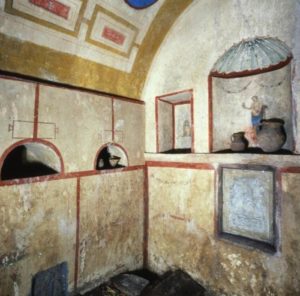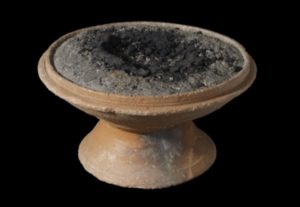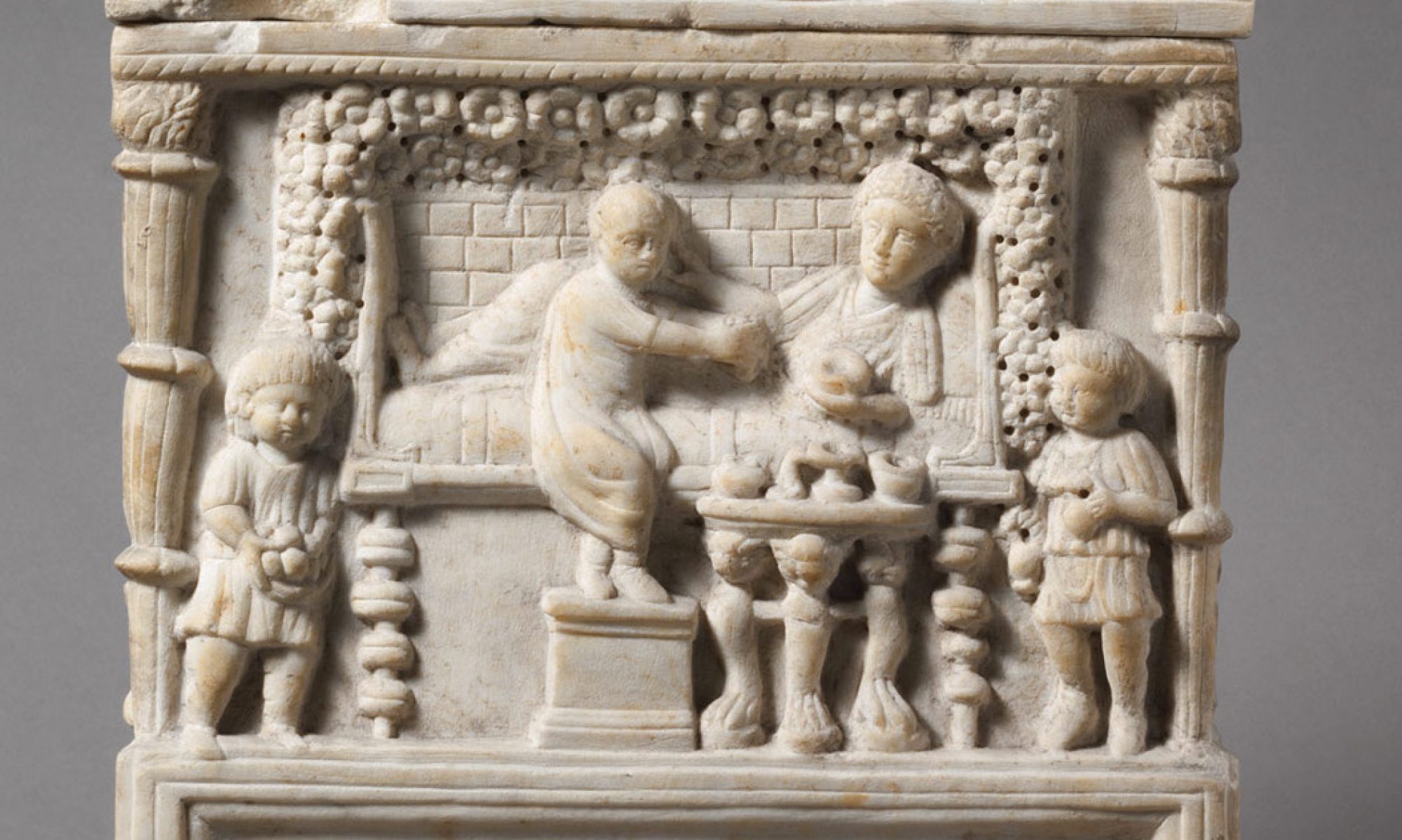Rituals, Ephemera, and the Senses
Rituals and ephemera are perhaps the most impactful factors to consider as influences on the production, display, and viewing of marble cinerary vessels. Ephemeral objects (or otherwise carbon-based materials which have disintegrated over time), ritual performances, unrecorded lamentation and songs, and other temporary experiences relying on the different senses are all factors that affected how cinerary urns were displayed and ultimately viewed. The relief decoration does not always allude to these aspects, but they merit consideration.
Literary examples are abundant in presenting poetic lamentations and offerings poured out over cremated remains. Perhaps most famously, Catullus (Carmen 101) carried out “wretched funeral rites” (miserās inferiās) for his brother as he poured out tears and likely wine over the silent ashes and bones (mūtam…cinerem).
Amidst his many laments, Catullus also indicates that it was the prerogative to keep family’s cremated remains together (Carmen 68, prope cognates). This means we should consider the physical presence of other deceased family or the perceived presence of their memory/spirit as relevant in discussions of display contexts.
Except where poetry visualizes the ephemera, the factors on which this study focuses are the materials left behind from ephemera, which includes the grave goods, garlands, lamps, and offerings such as incense or fruit and flower baskets. The Columbarium Tomb of Via Taranto, for example, was discovered with terra cotta offering vessels in situ in the different niches.

Standard offerings of incense and flower baskets were sure to have been present at almost every tomb. Flower baskets appear in the relief decoration on numerous marble cineraria, but the representation of incense, a difficult task for artists, is less typical but not absent. One relief from the Tomb of the Haterii depicts smoldering incense burners, which evoke the many potent scents of spices and herbs used as incense.

Incense burner with ash (terracotta, British Museum SAP 010697, Pompeii Excavation, 13.5cm x 25cm) https://www.bmimages.com/preview.asp?image=01098032001
